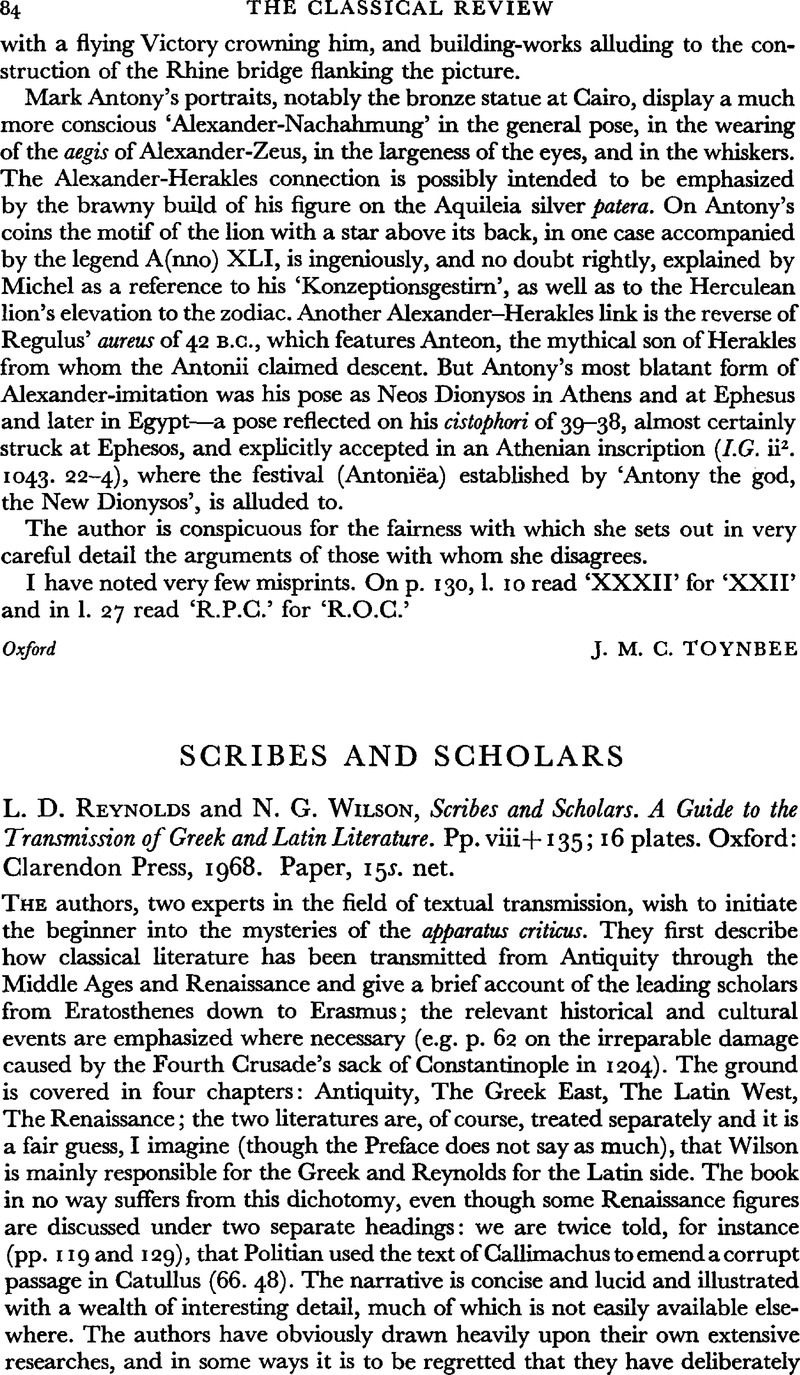Published online by Cambridge University Press: 27 February 2009

1 Bailey, Shackleton in Gnomon xxxiii (1961), p. 476Google Scholar. See also Dover's remarks in the preface to his recent edition of Clouds (p. vii): ‘I recognize one “principle” of textual criticism, and one only: to take into account, so far as is humanly possible, everything that is relevant, recognizing that what the manuscripts actually say in a given passage is never more than a portion of the evidence relevant to that passage and that the decisive evidence may appear from any quarter and from any distance.’
2 Latest discussion, with full bibliography, in Peter Rau's Paratragodia (Zetemata 45: Munich, 1967), pp. 139 ffGoogle Scholar. See also Taillardat's, Les Images d'Aristophane (Paris, 1962)Google Scholar, § 642 for a different interpretation. That Lamachus' farewell is addressed to a beloved object and not to the light of day is made clear by what immediately follows: far from dying he jumps back on to his feet, and the rigmarole of sublime nonsense goes on.